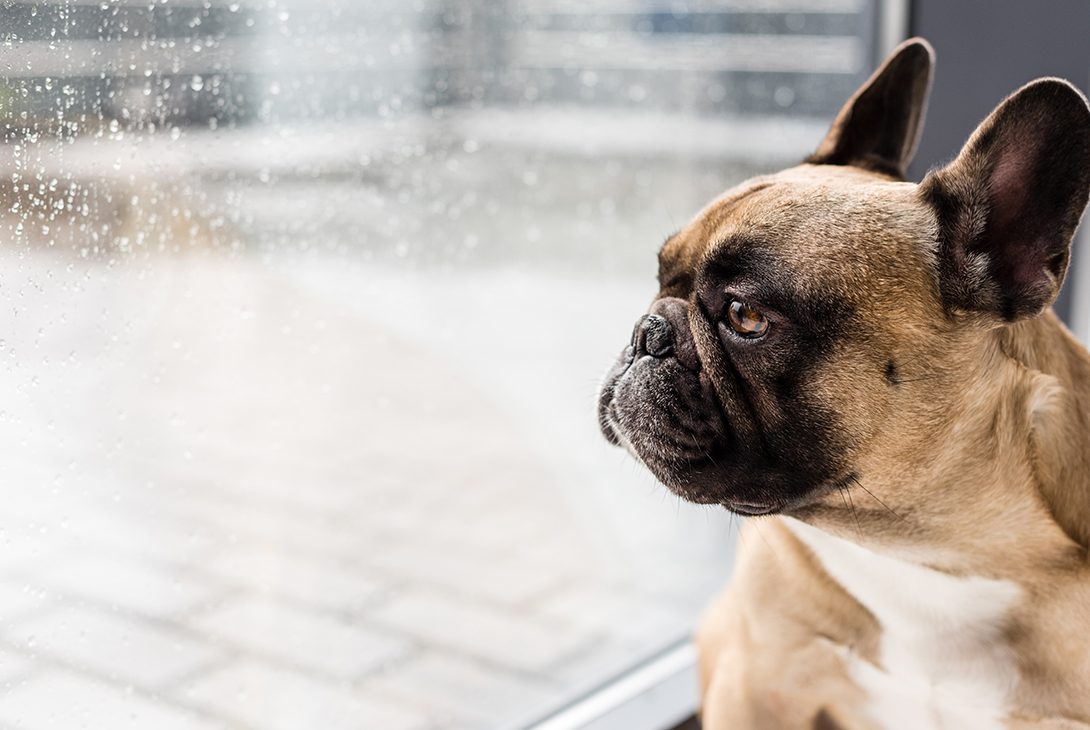
Wet Weather and your Pet
With the fire comes the rain… What does all this recent wet weather mean for your pet?
The recent weather change, particularly if you are lucky enough to live on Australia’s East Coast is an incredible display of Mother Nature at her finest. When things seemed to be hitting all-time high and dry, the skies opened allowing the regeneration process to spring into life. The period during and after wet weather can affect your pet in a few ways and this month’s blog will focus on a few of those.
Wet hair... don’t care
Well, we should care! If your dog is constantly out in the rain and has a heavy coat of fur then we do see an increase in ‘hot spots’ or moist dermatitis occurring filling rainy periods. The moisture gets trapped in the fur and the skin, helping to promote an environment that bacteria thrive in. Add a sunny day in there and the warmth plus moisture will cause the bacteria to have a field day under your dog’s fur and overnight a ‘hot-spot’ can develop. Hot spots are red, painful, sticky, roughly circular lesions that occur when the conditions are right for bacteria to replicate in huge numbers. Dog’s skin is covered with bacteria all of the time and favourable conditions allow the bacteria to do what they do best. How to prevent these from occurring? Try and keep your dog’s coat dry most of the time. Use the Dr Zoo shake it off shammy or blow dry after a freshwater rinse will help. Rubbing in a Dry Shampoo, like the Ruff to Fluff Dry Shampoo, which can help soak up excess moisture. Brushing their coat with the Bamboo brush daily will also pick up on any early lesions. Usually, once you spot the lesion, medical treatment is required and your vet will clip and clean the area and give your dog topical or systemic antibiotics.
Parasites
Paralysis ticks (if you live anywhere from Nth QLD to Nth VIC along the bushy east coastline) are very much prevalent after wet weather. When there is a lot of moisture and high humidity ticks thrive, so make sure you're using tick prevention on your cat or dog. Not all flea products contain paralysis tick prevention so be careful and read the label. There are a number of great options for both species now on the market and as the weather does cool down, continue to treat your pet because paralysis ticks can be seen during the cooler months as well.
Ear Infections
Similar to the skin in general, ears are susceptible to infections during and after wet weather. If you have a breed of dog whose ears stand up then they prove to be the perfect funnel for collecting water in the rain and setting up an infection in the canal. If you have a floppy-eared breed then they don’t get the airflow and hence remain warm and damp giving bacteria a great start for building an infection. If you see your dog or cat shaking their head, scratching their ears or you notice a bad smell, get them seen by your vet.
Slippery surfaces
It seems simple but dogs can get very excited when you come home and they have been outside in the rain. This is when we see injuries occur from dislocated hips to fractured legs in some breeds, it happens. Try and keep the fur short between the paw pads of furry breeds and their nails short to offer extra grip if you have tiles or floorboards. Always have an outdoor shelter available for your pets to avoid injuries occurring while you are not there. Cats will often seek high places that are dry when raining so have a look around your home and perhaps consider areas where your cat could hide if they cannot access indoors. Make sure it’s safe for them., although cats are very good at living in a 3D world and have an amazing sense of balance, sometimes slippery, sharp gutter edges can cause injury.
Storms
Be prepared if your pet does suffer storm phobia. Natural and pharmaceutical medications are needed in some instances where your pet puts itself in danger or is existing in a heightened state of anxiety. Talk to your vet about different options best suited to your pet.
Rain, although needed, can be a buzzkill for any dog or cat that generally has access to outside. Especially if your dog is familiar with his daily walks, mentally he will need other sources of stimulation on rainy days. Try hiding treats around the house and playing a fun game of hide and seek, have an indoor play date with a friend’s pooch, teach them a new trick or just curl up and watch Marley and Me together :).
It’s a beautiful world that we live in and we are lucky enough to have our pets by our side, let’s take the very best care of them to ensure they too remain happy and healthy.
Dr Andy